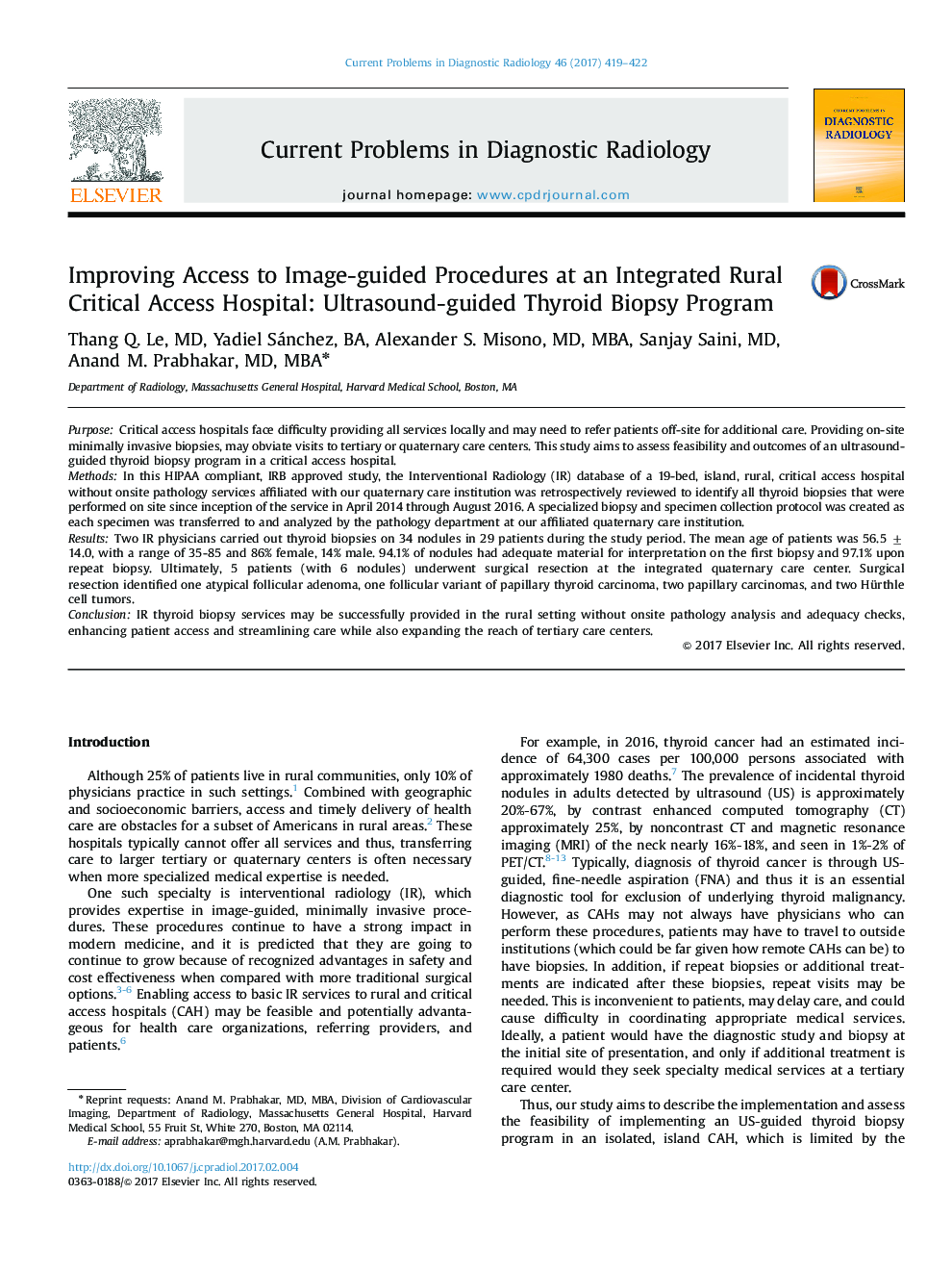| Article ID | Journal | Published Year | Pages | File Type |
|---|---|---|---|---|
| 5725880 | Current Problems in Diagnostic Radiology | 2017 | 4 Pages |
PurposeCritical access hospitals face difficulty providing all services locally and may need to refer patients off-site for additional care. Providing on-site minimally invasive biopsies, may obviate visits to tertiary or quaternary care centers. This study aims to assess feasibility and outcomes of an ultrasound-guided thyroid biopsy program in a critical access hospital.MethodsIn this HIPAA compliant, IRB approved study, the Interventional Radiology (IR) database of a 19-bed, island, rural, critical access hospital without onsite pathology services affiliated with our quaternary care institution was retrospectively reviewed to identify all thyroid biopsies that were performed on site since inception of the service in April 2014 through August 2016. A specialized biopsy and specimen collection protocol was created as each specimen was transferred to and analyzed by the pathology department at our affiliated quaternary care institution.ResultsTwo IR physicians carried out thyroid biopsies on 34 nodules in 29 patients during the study period. The mean age of patients was 56.5 ± 14.0, with a range of 35-85 and 86% female, 14% male. 94.1% of nodules had adequate material for interpretation on the first biopsy and 97.1% upon repeat biopsy. Ultimately, 5 patients (with 6 nodules) underwent surgical resection at the integrated quaternary care center. Surgical resection identified one atypical follicular adenoma, one follicular variant of papillary thyroid carcinoma, two papillary carcinomas, and two Hürthle cell tumors.ConclusionIR thyroid biopsy services may be successfully provided in the rural setting without onsite pathology analysis and adequacy checks, enhancing patient access and streamlining care while also expanding the reach of tertiary care centers.
